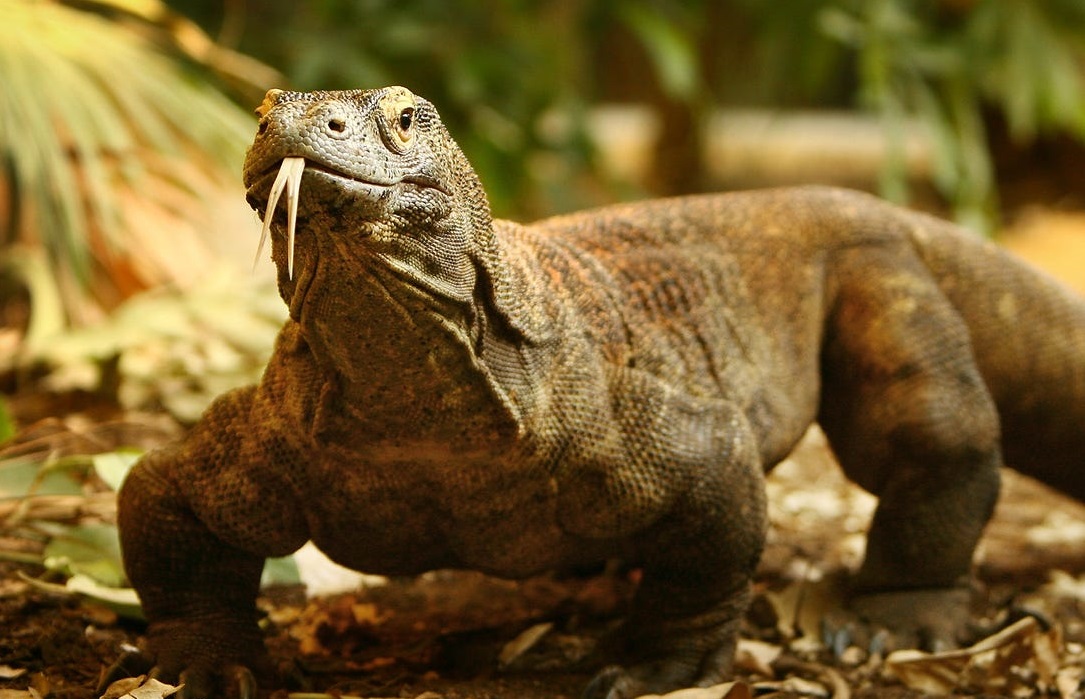Komodo dragon (Varanus komodoensis) is one of the endangered species of ancient reptile, which is protected and only exists on Komodo Island, Indonesia.
Komodo dragon is the largest lizard species in the world. Komodo National Park is the only place in the world that is home to the Komodo dragon.
The existence of this national park is essential because the number of Komodo dragon populations in the world is limited, which is only around 3000. For more information about the Komodo dragon, let’s get closer to them!
- Characteristics of Komodo Dragon
As you know, the Komodo dragon is one of the prehistoric animals that still exist today. Before you get closer, let me remind you that the Komodo dragon is one of scary animal over the world, watch out!
- Physical Description
Adult Komodo dragons can weigh up to 70 kilograms if they live in the wild. Adult Komodo dragons that live in captivity can grow up to 3.13 meters with a weight of 166 kilograms.
Komodo dragon has a large body and is commonly referred to as the world’s largest lizard, but not the longest. The longest lizard is the Papua lizard (Varanus salvadorii).
The unique feature of the next Komodo dragon is that if at first glance the teeth are not visible but the Komodo dragon has sharp teeth with a length of about 2.5 cm and a total of 60 pieces.
Komodo dragon has a long yellow tongue and branched ends. Komodo dragon has venomous saliva because if they are mixed with the blood of infected living things, the blood will not be able to clot and various other effects.
- Habitat
The Komodo National Park is located in the middle of the Indonesian archipelago, between the islands of Sumbawa and Flores. Komodo National Park has an area of 173,300 hectares, covering land and sea areas with five main islands; Komodo Island, Padar Island, Rinca Island, Gili Motang, Nusa Kode, and also other small islands.
It is known that the Komodo dragon prefers hot and dry places and usually lives in dry grasslands, savannahs, shrubs, and tropical forests. Komodo dragon digs holes 1-3 meters using forelimbs and sharp claws.
The habit of sleeping in a hole at night aims to keep its body temperature hot so that it can reduce the amount of time to sunbathe the following morning.
Apparently, there are two kinds of rabbits which can live in the dry area besides the Komodo dragon. Maybe if they live on Komodo island, they will become prey to the Komodo dragon.
- Diet
Komodo dragons are carnivorous animals. Not only prey on other animals, but Komodo dragons can also dismantle human tombs and eat the bodies. Komodo dragons are indeed not friendly animals, even for their kind.
An adult Komodo dragon can attack and eat smaller Komodo dragons if they are hungry. What’s worse is the adult Komodo dragon is also not reluctant to eat their babies after birth. Of course, the Komodo dragon is not the only cannibal animal.
Another cannibal animal is the Greenland shark, one of the longest living animals in the entire world. Although able to swallow a whole goat, but the Komodo dragon has a slow digestive system.
After a big meal, they will bask in the sun to speed up the digestion process. If the process is complete, the Komodo dragon will vomit the leftover food such as horns, teeth, or prey that cannot be digested.
The intensity their hunt depends on how large the prey they get. The bigger the prey, the less they hunt. Generally, a Komodo dragon only needs to eat once a month.
- Status
These wild animals are expressed as animals whose population is stable. The total wildlife population in 2017 reached 3012 animals scattered in their habitat. Though, its population is stable it does not mean that the komodo dragon is less endangered.
This number has increased compared in previous year, which was influenced by the addition of its population on the islands of Gili Motang and Nusa Kode.
This number can increase or decrease in 2018 due to several factors. These factors include a reduction in the number of adult dragons due to death and increased reproduction.
This fluctuation is still unpredictable because of the uniqueness of the caste pattern of adult life that is caste where the adult Komodo dragon controls the smaller one.
Do We Have to Save Komodo Dragons?
Although it is still far from being extinct, this animal must be preserved. The Head of the East Nusa Tenggara Tourism Office, Wayan Darmawa said, the Komodo National Park will be closed in early 2020.
Though, it is canceled, but the government says that those who want to visit must have a premium membership card. Premium cardholders will be directed to Komodo Island, where large Komodo dragons live. Meanwhile, those who do not have a premium card will be directed to another location.
Initially, The reason for the National Komodo Park closure was to improve the island’s ecosystem. The number of Komodo dragons and their natural prey is expected to decrease. The Komodo National Park will be temporarily rehabilitated.
All parties involved in the maintenance of the Komodo National Park will certainly prepare Komodo dragon food such as deer, goats, and other Komodo dragon needs. The goal is that they will not attack each other, which leads to the extinction of the Komodo dragon itself.
Perhaps, we can save Komodo dragons too so the population will stay stable. Even though small, but here are steps we need to save animals before they extinct.

